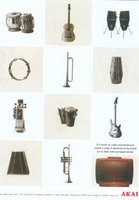Company: HLL
Agency:Lowe
Brand Count:232

In the year 2000 the brand was worth Rs 400 crore becoming a market leader in Jams squashes and Ketchup. The brand then went all the way south to become a spectator when its leadership positions was taken by new brands.
The utter confusion regarding the longterm strategy for Kissan brand was visible through the experiments that was conducted on this brand by Hll. HLL always wanted to make it big in the food business. Understandably so , the Indian processed food market is having a staggering size of Rs 2,80,000 crores and the market is highly fragmented. Now wonder an FMCG giant like HLL wants a slice of it.
But with a brand which had a tremendous equity during the late nineties and early 2000, HLL had weird plans. One of the major casualty of MS Banga's Power brand strategy was Kissan. During the early 2000, the brand Kissan was rebranded as Kissan Annapurna. Kissan Annapurna was marketing not jams and squashes by Atta,salt and other staple foods.Later Annapurna and Kissan was splited into two seperate brands , one concentrating on staple foods and other on processed foods. This migration strategy proved to be ve
 ry costly for both Kissan and Annapurna brand.
ry costly for both Kissan and Annapurna brand.Kissan was synonymous with Jams and Squashes during its initial years. Kissan Ketchup was a market leader in ketchup segment but these experiments and myopic strategies pushed the brand behind the focused and aggressive Maggi. While in squashes , the aggressive campaigns of Rasna and other cola marketers made the squash category irrelevant.
So all through the period 2001-2005, Kissan was in a sticky wicket. But now according to reports, the brand mandarins of HLL is now clear about Kissan as a brand for processed food like Jams ,ketchups and like.
That change is visible in the recent campaign of Kissan which takes a unique view of Ketchup. Taking the tagline " Ao banaye pakode bahetar" translated to " Making Pakode taste better". In these series of ads, the brand plays a second fiddle to the main snack. The brand takes the positioning of a "Great Accompaniment " .The same theme is reflected in the latest ad of Maggi featuring Javed Jaffri in a Jail.
Although the brand had problems at the strategic level, Kissan had its own share of innovations. It had a innovative squeezy package for the Ketchup which became very popular. Besides all migrations, its Jams were very popular . Kissan even used Rahul Dravid to endorse the brand.The brand also has came out with Low calorie jam to appeal to the health conscious crowd.
The unwarranted brand extension and migrations had made Kissan's brand equity suffer and that loss is not that easy to cover. Although Maggi had similarly extended itself to be an umbrella brand, the brand had a focus. But unlike Maggi, Kissan extended itself to Rice, Atta and even salt and also messed up by combining its name with Annapurna brand.
Kissan is a classic example of "Messing Up a Successful brand".
.jpg)





























